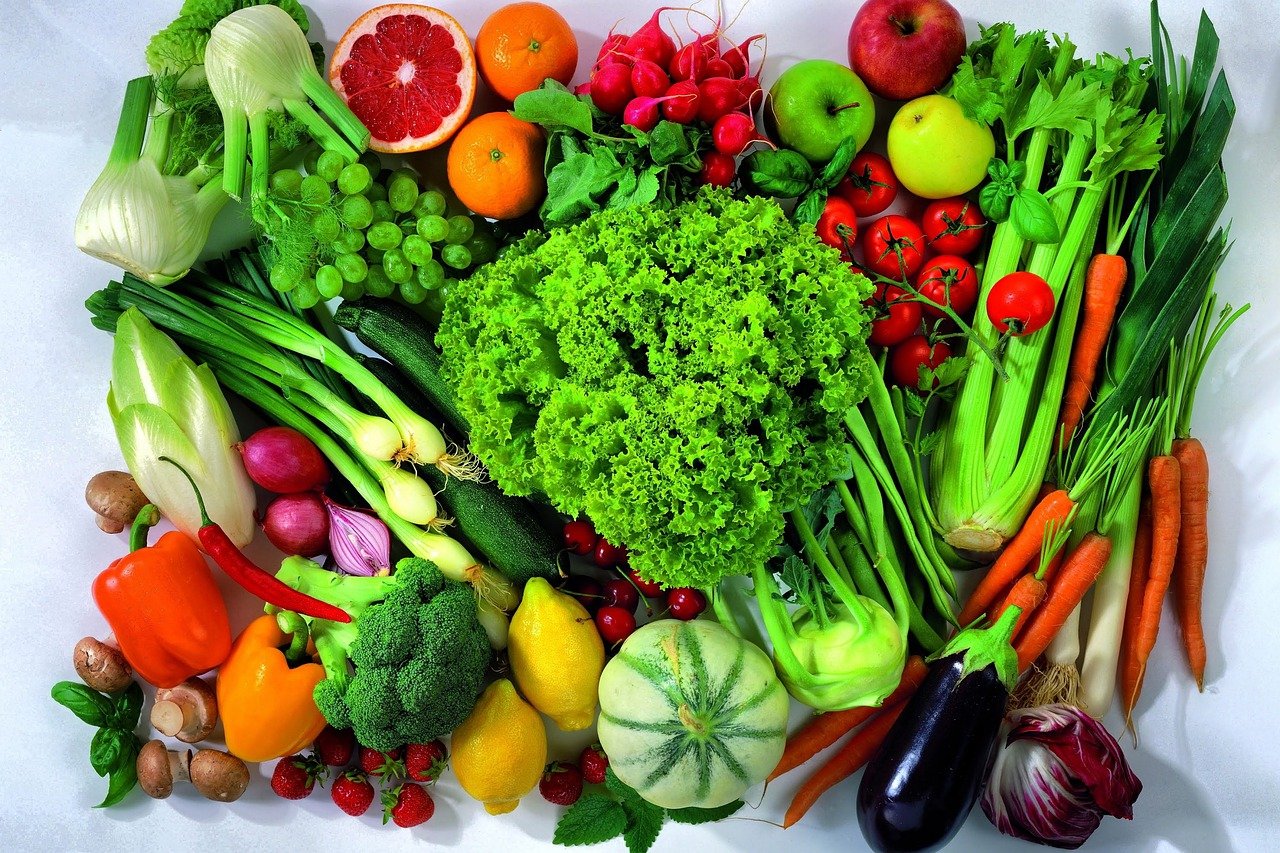If you’re into skincare, chances are you’ve already heard of collagen and the wonders it can do for your skin. However, collagen can offer more than just help you maintain a youthful look: it’s a major building block of nearly every part of your body, including your bones, muscles, blood vessels, corneas, and teeth.
But where does collagen come from, and why is it so important to our bodies?
In this article, we will be exploring collagen: what it is, how it benefits your body, and where you can get more of it.
What Is Collagen?
Collagen is a family of proteins that serve as the primary structural component of connective tissues, such as skin, bone, hair, muscles, and teeth. In fact, collagen makes up a third of all the protein in the human body.
Collagen can be best described as the glue which holds your cells together, forming the most crucial parts of your body. There are 18 types of collagen, which can be categorized into 4 types based on amino acid composition[1,2]:
- Type I. This type of collagen makes up 90% of your body’s collagen, providing structure to bones, skin, cartilage, connective tissues, and teeth. It can be described as densely packed fibers.
- Type II. This collagen can be described as loosely packed fibers, and it can be mostly found in elastic cartilage.
- Type III. This type of collagen supports muscles, organs, and arteries.
- Type IV. This type of collagen takes part in filtration and can be found in between layers of the skin.
As we age, the amount of collagen produced in our bodies deteriorate – which is why our skin tends to sag and our bones become fragile once we reach our golden years.
Collagen can also deteriorate from the excessive consumption of sugar and refined carbohydrates, excessive exposure to UV rays, and smoking.
Fortunately, there are plenty of ways to slow down the inevitable degradation of collagen. One way to preserve your collagen is by consuming food sources of nutrients that facilitate the growth of collagen or by directly taking collagen as supplements. Collagen supplements are generally considered safe, with no known side effects as of date.
Where Does Collagen Come From?
The body produces its own supply of collagen, which starts off as procollagen.
To make procollagen, the body needs two amino acids – glycine and proline, which is broken down from dietary protein. These dietary proteins can be obtained in both plant and animal sources, such as poultry, dairy, red meat, legumes, and tofu, which are excellent sources of amino acids.
Vitamin C and copper are also crucial for facilitating collagen production.

Vitamin C can be obtained from citrus fruits (oranges, lemons, grapefruit), bell peppers, broccoli, and strawberries. Meanwhile, copper can be found in shellfish, organ meats, whole grains, and cocoa products.
The Benefits of Taking Collagen Supplements
Collagen is present in nearly every nook and cranny of our bodies – so it makes sense that boosting your collagen supply would provide a plethora of benefits for your body, inside and out.
According to research, here’s how boosting your collagen intake can improve your health.[3, 4]
- Improves Skin, Hair, and Nail Health
Collagen is perhaps most known for its ability to help us preserve the quality of our skin, nails, and hair, as evident in hundreds of beauty products that highlight collagen as an active ingredient.
Collagen is the structural protein that holds your skin, hair, and nails together – it keeps these parts moisturized and elastic, protecting them from brittleness and dryness. This is why you’ll notice that the skin tends to sag and is prone to dryness among older people, as our bodies tend to produce less collagen as we get older.
To maintain the quality of your skin, hair, and nails, increasing your intake of collagen can slow down the inevitable process of collagen degradation, which is especially crucial as you approach old age.
In one study that involved women aged between 35-55, collagen supplementation showed to have decreased dryness and improved skin elasticity after an 8 week period, compared to those who did not take the supplements.[5]
Taking collagen supplements was also found to reduce nail brittleness and improved the overall nail quality of the participants after 24 weeks of taking one 2.5g collagen supplement a day.[6]
- May Help Lessen Joint Pain
Collagen makes up the majority of cartilage, a rubber-like flexible tissue which connects two bones together, forming a joint. This cartilage also protects your bones from rubbing against each other, which can lead to the tearing of bone and the development of cysts.[7] As you can imagine, this condition is quite painful and debilitating – thus, it is crucial to keep your cartilaginous joints well-maintained through collagen supplementation.
Since aging slows down the production of collagen, older people are at a higher risk of developing degenerative joint disorders, such as osteoarthritis.
Taking collagen supplements have been found to prevent such conditions, as well as joint pain experienced by athletes and older adults.
For instance, a study involving 73 athletes found that collagen supplements can reduce joint pain both at rest and in motion, just after 24 weeks of supplementation. Athletes were in particular interest as they frequently experienced joint pain despite having no osteoarthritis, a condition that had mostly been the focus of collagen treatment studies.[8]
In a study with adults diagnosed with osteoarthritis, those who took collagen supplements reported a significant reduction in joint pain and found it easier to partake in physical activity as opposed to those who did not take the supplements.[9]
- Can Help Strengthen Bones
If calcium is the main building block of bones, then it is collagen which provides structure and keeps them in place. This is why as we age, our bones tend to become brittle and prone to breakage – the deterioration of collagen causes our bones to loose its structure, slowly decreasing bone density.[10]
Several studies have found that taking collagen supplements can strengthen your bones, as well as prevent or slow down bone deterioration, which leads to conditions like osteoporosis.
For instance, one study had 39 postmenopausal women take calcium and collagen supplements daily, for a span of 12 months. It was found that those who took both pills had significantly lower levels of proteins that signal bone loss in their blood, as opposed to those who only took the calcium pills.[11]
- Can Help Boost Muscle Mass
Since collagen also makes up 10% of our muscle tissue, taking collagen supplements may help maintain muscle strength and function.
For instance, one study had 27 men with sarcopenia (gradual muscle loss) take collagen supplements while engaging in a daily exercise routine. It was found that the weakened men who took supplements had significant gains in terms of muscle mass and strength, as opposed to the men who only exercised.[12]
- Promotes Heart Health
Turns out collagen is great for the heart as well! Considering that the heart is also a muscle, there’s no doubt that collagen supplements can help strengthen your heart.
Collagen also strengthens your arteries, which lowers the risk of potentially fatal conditions, such as the narrowing of blood vessels or arteries. Once our blood vessels or arteries have become weakened, our chances of developing a stroke or a heart attack increase – thus, it is important to keep our arteries strong and flexible.
Some studies have found evidence that collagen has a positive effect in this regard. In one study, 31 healthy adults took collagen supplements daily for a period of 6 months. It was observed that those who took the supplement had a significant reduction in artery stiffness, along with an increase in good (HDL) cholesterol levels.[13]
Conclusion
Although collagen is well known for its benefits to the skin and hair, plenty of scientific evidence proves that collagen can improve the state of your bone, muscle, and cardiovascular health.
Additionally, taking collagen supplements is generally considered safe when consumed within acceptable levels, with few known side effects, such as some minor digestive troubles. Collagen production can be also boosted by eating more of vitamin C, protein, and copper rich food.
References
[1] Ross, R. (2020, January 23) What is collagen? Retrieved on November 24, 2020 from https://www.livescience.com/collagen.html
[2] Jennings, K. (2020, May 5) Collagen — What Is It and What Is It Good For? Retrieved on November 24, 2020 from https://www.healthline.com/nutrition/collagen
[3] Elliott, B. (2020, February 19) Top 6 Benefits of Taking Collagen Supplements. Retrieved on November 24, 2020 from https://www.healthline.com/nutrition/collagen-benefits
[4] Migala, J. (2020, September 8) https://www.everydayhealth.com/skin-beauty/potential-health-benefits-of-collagen-and-thing-it-cant-do/
[5] Proksch, E., Segger, D., Degwert, J., Schunck, M., Zague, V., & Oesser, S. (2014). Oral supplementation of specific collagen peptides has beneficial effects on human skin physiology: a double-blind, placebo-controlled study. Skin pharmacology and physiology, 27(1), 47–55. https://doi.org/10.1159/000351376
[6] Hexsel, D., Zague, V., Schunck, M., Siega, C., Camozzato, F. O., & Oesser, S. (2017). Oral supplementation with specific bioactive collagen peptides improves nail growth and reduces symptoms of brittle nails. Journal of cosmetic dermatology, 16(4), 520–526. https://doi.org/10.1111/jocd.12393
[7] American Chiropractic Association. (n.d.) https://www.acatoday.org/Patients/Health-Wellness-Information/Joint-Health
[8] Clark, K. L., Sebastianelli, W., Flechsenhar, K. R., Aukermann, D. F., Meza, F., Millard, R. L., Deitch, J. R., Sherbondy, P. S., & Albert, A. (2008). 24-Week study on the use of collagen hydrolysate as a dietary supplement in athletes with activity-related joint pain. Current medical research and opinion, 24(5), 1485–1496. https://doi.org/10.1185/030079908×291967
[9] Schauss, A. G., Stenehjem, J., Park, J., Endres, J. R., & Clewell, A. (2012). Effect of the novel low molecular weight hydrolyzed chicken sternal cartilage extract, BioCell Collagen, on improving osteoarthritis-related symptoms: a randomized, double-blind, placebo-controlled trial. Journal of agricultural and food chemistry, 60(16), 4096–4101. https://doi.org/10.1021/jf205295u
[10] Viguet-Carrin, S., Garnero, P., & Delmas, P. D. (2006). The role of collagen in bone strength. Osteoporosis international : a journal established as result of cooperation between the European Foundation for Osteoporosis and the National Osteoporosis Foundation of the USA, 17(3), 319–336. https://doi.org/10.1007/s00198-005-2035-9
[11] Elam, M. L., Johnson, S. A., Hooshmand, S., Feresin, R. G., Payton, M. E., Gu, J., & Arjmandi, B. H. (2015). A calcium-collagen chelate dietary supplement attenuates bone loss in postmenopausal women with osteopenia: a randomized controlled trial. Journal of medicinal food, 18(3), 324–331. https://doi.org/10.1089/jmf.2014.0100
[12] Zdzieblik, D., Oesser, S., Baumstark, M. W., Gollhofer, A., & König, D. (2015). Collagen peptide supplementation in combination with resistance training improves body composition and increases muscle strength in elderly sarcopenic men: a randomised controlled trial. The British journal of nutrition, 114(8), 1237–1245. https://doi.org/10.1017/S0007114515002810
[13] Tomosugi, N., Yamamoto, S., Takeuchi, M., Yonekura, H., Ishigaki, Y., Numata, N., Katsuda, S., & Sakai, Y. (2017). Effect of Collagen Tripeptide on Atherosclerosis in Healthy Humans. Journal of atherosclerosis and thrombosis, 24(5), 530–538. https://doi.org/10.5551/jat.36293























